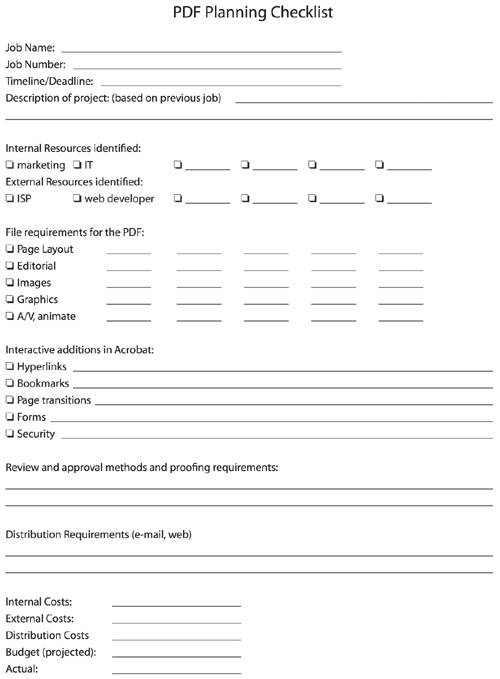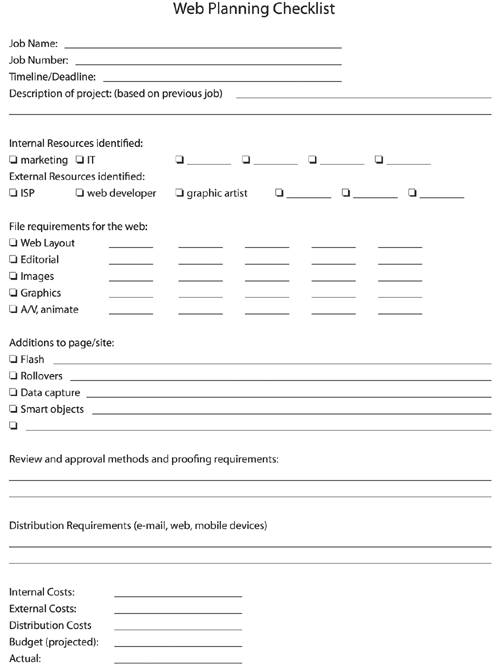Specific Production Options
| Within the context of print, planning for production involves paper (stock and substrate), ink or toner, and the printing method (digital and offset or alternative print technologies such as flexographic, serigraphic (or screen) printing, and so on). All these elements involve careful planning of the manufacturing process. Offset and digital are the most common methods of printing marketing publications. Flexography is found in package and label printing. Screen and wide format digital are most often used for signage and printing on unusual surfaces or specialty items. Letterpress is still used for engraved stationery, stamping of forms, and ticketing. As you will often hear throughout the book, I strongly recommend establishing a good working relationship with your print service provider. When you are in the beginning stages of a project and have determined that some portion of it will be printed, be sure to involve your service provider. Sit down with them and discuss your options, manufacturing processes, and the costs associated with each idea you have. They can make useful and cost-effective suggestions regarding stock and ink. They will engineer the layout to the stock in the most practical, efficient, and least wasteful process possible. They will also recommend or caution you on your ink choices based on what will happen to the piece after it's distributed. If they can offer a variety of technologies, they will guide you to appropriate choices for offset, digital, letterpress, screen, or flexo printing. Binding and finishing should also be discussed and planned for because these add to the expense as well as the timeline for delivery of the finished pieces. If you have a multiple-page document, you should choose from a mechanical bind, saddle stitching, perfect binding, or case binding. If you have a job that requires folding (such as folders, stationery, or brochures), discuss the exact fold sequence and, if possible, make up a dummy. This will assist your print service provider when estimating the job. Uncommon folds can require a change in equipment setup, employing handwork, or sending the job out to a specialty shop to accommodate the request. Special finishing requirements such as coatings, die cuts, stamping, or embossing, will likely be sent to a specialty shop, take longer, and cost more. Tip
Checklist for Print ProductionI wanted to put together a guideline to assist you through the print production process. Consider how you organize your digital information, including your filenaming conventions and folder structure. I suggest using a folder with the job name/number and putting your layout(s) within that folder. Then use subfolders for fonts, images, and text files. It's also useful to identify, in advance, where all your resource files will be coming fromboth internally and externally. The remainder of the form answers the following questions:
Figure 2.1 presents an example of a checklist you can use to guide you through the planning process. Figure 2.1. Feel free to modify it as you see fit with the InDesign file; then you can export it to reuse it as a PDF form! PDF Prep for Press, Print, or ViewWhen creating a standard file exchange for distribution, there's no question that PDF is the way to go. Creating a PDF for distribution via InDesign CS2 couldn't be easier with its newly enhanced PDF presets. Simply choose the appropriate preset (the equivalent of job options), tweak the settings to best fit your production, and export. You will be making several PDFs throughout the book. If your job is destined for press, consider the PDF/x file structure; it's a PDF with a structure that guarantees minimal intervention by your print service provider. The PDF/x file format originated with newspapers and publishers trying to get advertising submissions standardized and minimize the amount of time spent on these ads. The PDF/x format not only creates a PDF, but also ensures that key ingredients necessary for most print service providers are found in the file, including trim and media box information, color specifications (CMYK as well as spot color), and trapping information. You can create a bad PDF, so take the time to collaborate with your service provider on these settings. But not all PDFs are headed to your print service provider. If your job is headed for digital output, externally or internally, you will probably choose the PDF preset for Print, but make sure you ask your provider for specifications. New digital presses such as Xerox's iGen3 and HP's Indigo rival offset quality, and your service provider might ask you to follow PDF for press guidelines. PDFs for print slightly lowers the overhead for resolution and compression for your file (meaning the quality expectations are lower for digital output), and the file size should be smaller and somewhat more compact. It is designed for laser output, but you might end up distributing this file via email and have the recipient print it. For example, it might be a form the recipient needs to fill out and sign. Anything you want to distribute electronically but still want to print well should be done via PDF for print. Finally, PDF distribution can be for read-only purposes. Whether it's for distribution via email or it's to be viewed on the company website, the goal is to make a small PDF with low-resolution images and RGB color. You use RGB color because the device the viewer will be usinga monitoris an RGB device. Choosing the Smallest File Size preset is recommended for this purpose. Checklist for PDF ProductionThe following is a guideline to assist you through the PDF production process. Consider how you organize your digital information, including your filenaming conventions and folder structure. I suggest using a folder with the job name/number and placing your layout(s) within that folder. Then use subfolders for fonts, images, and text files. It's also useful to identify, in advance, where all your resource files will be coming fromboth internally and externally. The remainder of the form answers the following questions:
See Figure 2.2 for an example of a checklist you can use to guide you through the PDF planning process. Figure 2.2. Feel free to modify it as you see fit with the InDesign file; then export it to reuse it as a PDF form! For WebWhen planning for web distribution, someone else will likely actually be compositing the web page or site in question. Many people still hire out this function because it is still uncommon to find a web and print skill set in the same person. However, it is essential that you understand the basic construction, terminology, language, and file format requirements. It is also important for you to understand the limitations of web compared to print with regard to typography and graphic presentation. You can provide interactivity and dimension with your web page that you can't on a two-dimensional piece of paper. You can enrich content with animation, sound, images, and movies to engage the user in a different way and provide a different experience. Collaborate with your service provider to submit the content she needs in the best possible format. You might have to repurpose your graphics, export your images, stories, and a PDF visual guide via Package for GoLive, or supply her with additional resources you wouldn't ordinarily store. You need to collaborate with your service provider on the structure of the website and the kind of elements that might enrich the recipient's experience. Understand that, just like binding and finishing options, asking for Flash animation will cost more. Weigh the benefits versus the cost. If you take a look at my company's website (www.dm-corp.com), you will see that, rather than integrating Flash animation throughout the site, we opted to just open the website with Flash animation. After you enter the site, it is developed in HTML. This was more cost-effective for us, but we were able to add some visual interest. Getting people to respond to you is easier when you ask them to spend little time and effort figuring out how to do it. Printed surveys are considered successful when you have around a 2% response rate. This, of course, could mean providing a self-addressed stamped envelope and asking recipients to fill out a form and walk the whole thing to a mailbox or mail stop. A website allows recipients to fill out a form online, which is fast, easy, and free. No wonder people spend time, money, and planning for capturing data actively and even more time, money, and planning capturing data passively (data such as who visited the site, how many times, and whether they left a cookie behind). The possibilities are endless, as are the number of professionals necessary to create, code, and track this data. And that all costs money. When planning for web production, first decide what type of content needs to reside on the site, how often it will change, who will change it, and how much it will cost to change it. Sound familiar? Checklist for Web ProductionThe following is a guideline to assist you through the web production process. Consider how you organize your digital information, including your filenaming conventions and folder structure. I suggest a folder with the job name/number and putting your layout(s) within that folder. Then use subfolders for fonts, images, and text files. It's also useful to identify, in advance, where all your resource files will be coming fromboth internally and externally. The remainder of the form answers the following questions:
Figure 2.3 shows an example of a checklist you can use to guide you through the web planning process. Figure 2.3. Feel free to modify it as you see fit with the InDesign file; then export it to reuse it as a PDF form! |
EAN: 2147483647
Pages: 148